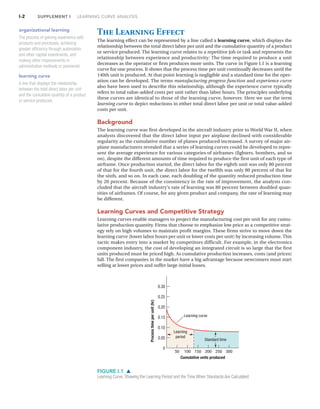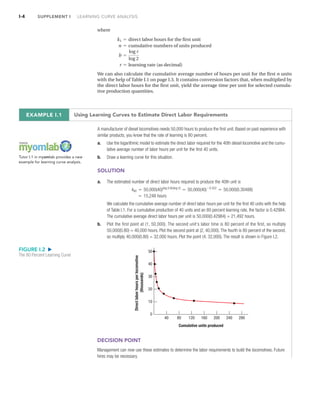This document discusses learning curves and how they can be used for managerial decision making. It begins by explaining what learning curves are and how they model the relationship between experience gained from production and improvements in productivity over time. As a company or worker's cumulative production increases, the time and costs required for each additional unit decreases. The document provides examples of how to develop a learning curve using a logarithmic model and calculate labor hours or costs at different production quantities. It describes how learning curves allow managers to project manufacturing costs and help companies pursuing a low-cost strategy.








